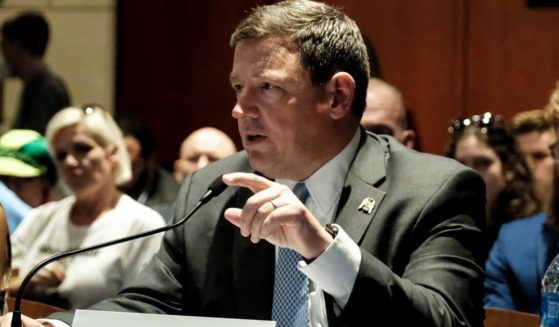
'Game of Thrones' Actress Reveals Two Brain Aneurysms Nearly Killed Her Since Show Began
The character that Emilia Clarke plays on the show “Game of Thrones” has become iconic. Even if you’ve never caught a glimpse of the show or its ads, you are probably still aware of Daenerys Targaryen.
If the name means nothing, the characteristics might: a woman with long, white-blonde, flowing locks, usually somewhat wavy and often half-up. Mother of dragons, she’s been a common Halloween figure since “Game of Thrones” found its fandom.
The actress has had a rough go of things from the start, and her story could be valuable to many. Even though she knew she wanted to pursue acting from a young age, it never came easily to her.
According to a piece the young woman wrote for The New Yorker, she forgot her lines during her first school play. It was the forgetfulness she experienced in her 20s, though, that almost sealed her fate in a much more terrifying way.
It was after the first season was filmed in 2011 that the problems really started to manifest. Over the years, Clarke realized she’d been experiencing warning signs of what was to come in the form of headaches and a serious migraine, but it wasn’t until she was training one day that everything fell apart.
“To relieve the stress, I worked out with a trainer,” she wrote. “I was a television actor now, after all, and that is what television actors do. We work out.”
“On the morning of February 11, 2011, I was getting dressed in the locker room of a gym in Crouch End, North London, when I started to feel a bad headache coming on. I was so fatigued that I could barely put on my sneakers. When I started my workout, I had to force myself through the first few exercises.”
“Then my trainer had me get into the plank position, and I immediately felt as though an elastic band were squeezing my brain. I tried to ignore the pain and push through it, but I just couldn’t.
“I told my trainer I had to take a break. Somehow, almost crawling, I made it to the locker room. I reached the toilet, sank to my knees, and proceeded to be violently, voluminously ill.”
The pain was intense, and the rest was a blur. Someone noticed her suffering and called for help.
“Then everything became, at once, noisy and blurry,” she continued. “I remember the sound of a siren, an ambulance; I heard new voices, someone saying that my pulse was weak.
“I was throwing up bile. Someone found my phone and called my parents, who live in Oxfordshire, and they were told to meet me at the emergency room of Whittington Hospital.”
An MRI revealed the heartbreaking truth: Clarke had experienced a stroke, an aneurysm, a subarachnoid hemorrhage. She was bleeding around her brain and she could die at any moment.
“As I later learned, about a third of SAH patients die immediately or soon thereafter,” she said.
“For the patients who do survive, urgent treatment is required to seal off the aneurysm, as there is a very high risk of a second, often fatal bleed. If I was to live and avoid terrible deficits, I would have to have urgent surgery. And, even then, there were no guarantees.
“I remember being told that I should sign a release form for surgery. Brain surgery? I was in the middle of my very busy life — I had no time for brain surgery. But, finally, I settled down and signed. And then I was unconscious. For the next three hours, surgeons went about repairing my brain. This would not be my last surgery, and it would not be the worst. I was twenty-four years old.”
While that operation was ultimately successful, she went through a grueling recovery period, and for a long time, she thought every day would be her last. She also experienced aphasia, and for some time could not even remember her own full name (Emilia Isobel Euphemia Rose Clarke). She was terrified that her career and life were doomed.
Doctors had found another weak spot in her brain that eventually bloomed into another life-threatening aneurysm and required immediate surgery, but there were complications and her recovery period the second time was even worse than the first.
Thankfully, years later, she has made an amazing recovery, one that she says has been “beyond my most unreasonable hopes.” She’s giving back by starting a charity to help people who went through the same things she did.
“I feel endless gratitude — to my mum and brother, to my doctors and nurses, to my friends. Every day, I miss my father, who died of cancer in 2016, and I can never thank him enough for holding my hand to the very end.”
Truth and Accuracy
We are committed to truth and accuracy in all of our journalism. Read our editorial standards.
Advertise with The Western Journal and reach millions of highly engaged readers, while supporting our work. Advertise Today.












